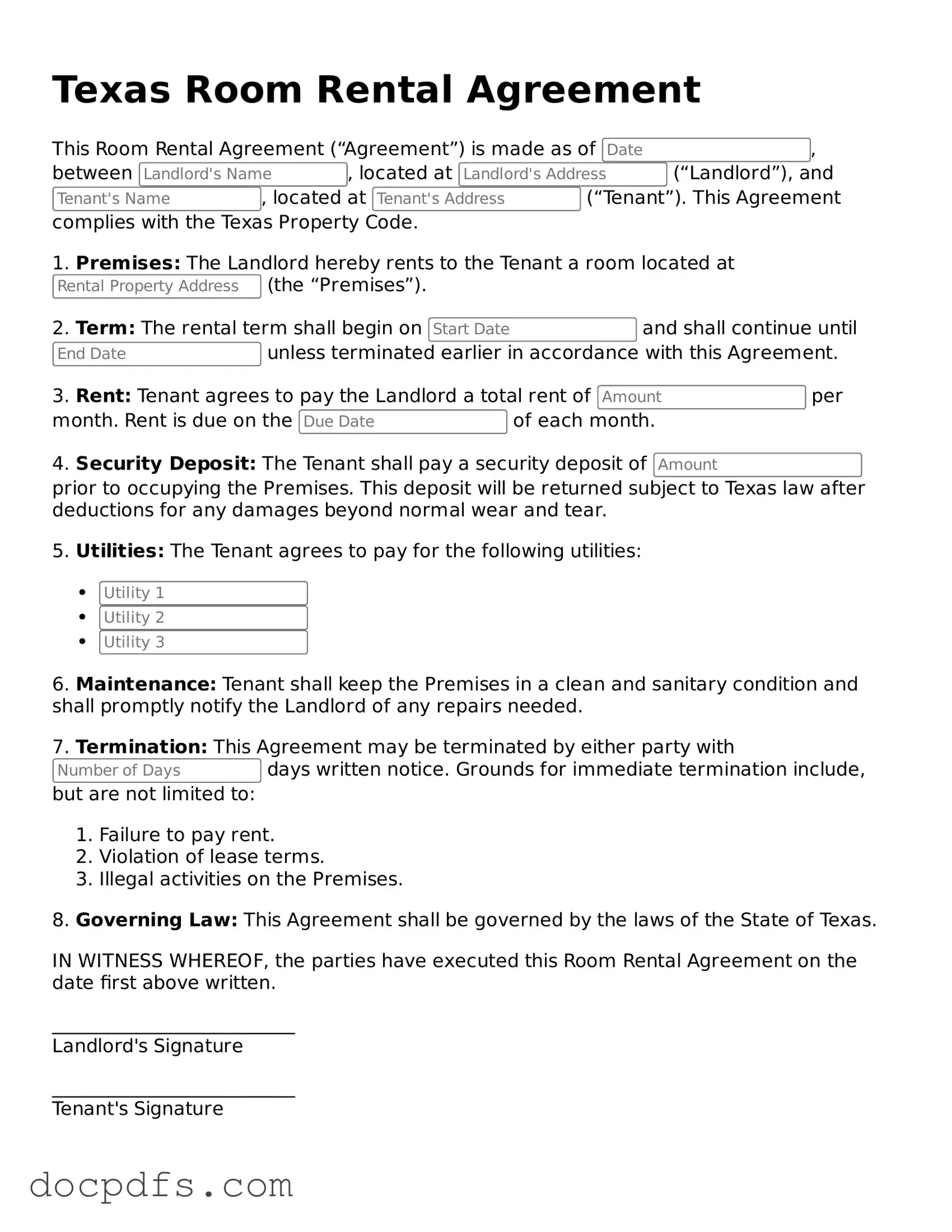What is a Texas Room Rental Agreement?
A Texas Room Rental Agreement is a legal document that outlines the terms and conditions under which a room is rented. It serves to protect both the landlord and the tenant by clearly defining the rights and responsibilities of each party. This agreement typically includes details such as the rental amount, duration of the lease, security deposit requirements, and rules regarding the use of the property.
Who should use a Room Rental Agreement?
This agreement is suitable for anyone renting out a room in their home or property in Texas. Whether you are a homeowner, a landlord, or a tenant looking to rent a room, having a formal agreement in place can help prevent misunderstandings and disputes. It is particularly useful in shared living situations, where multiple tenants may be involved.
What key elements should be included in the agreement?
When drafting a Room Rental Agreement, consider including the following essential elements:
-
Names of the Parties:
Clearly state the names of the landlord and tenant.
-
Property Description:
Provide details about the room being rented, including the address.
-
Rental Amount:
Specify the monthly rent and payment due date.
-
Lease Term:
Indicate the length of the rental period, whether it’s month-to-month or a fixed term.
-
Security Deposit:
Outline the amount required for the security deposit and conditions for its return.
-
Rules and Regulations:
Include any house rules, such as noise restrictions or guest policies.
Is a security deposit required?
While a security deposit is not legally required in Texas, it is highly recommended. A security deposit protects the landlord against potential damages or unpaid rent. The amount can vary but is typically equivalent to one month's rent. The agreement should specify the conditions under which the deposit may be withheld, such as damages beyond normal wear and tear.
Can the agreement be modified after it is signed?
Yes, the Texas Room Rental Agreement can be modified after it is signed, but both parties must agree to the changes. Any modifications should be documented in writing and signed by both the landlord and the tenant to ensure clarity and legal standing. Verbal agreements are not enforceable, so it's best to keep everything in writing.
What happens if a tenant violates the agreement?
If a tenant violates the terms of the Room Rental Agreement, the landlord has the right to take action. Common violations include failure to pay rent, causing damage to the property, or breaking house rules. The landlord may issue a notice to the tenant, outlining the violation and providing a timeframe for correction. If the issue is not resolved, the landlord may proceed with eviction, following the legal process required in Texas.
